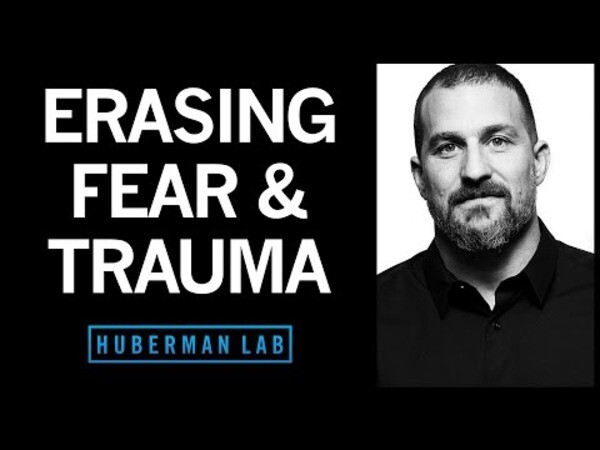
This week, I listened to a fascinating podcast by Andrew Huberman, professor of neurobiology and ophthalmology at Stanford School of Medicine, on the topic of fear and trauma (Lab Podcast #49). Huberman, speaking from a modern scientific perspective, contends that “Memories are protective [adaptive], or dangerous [maladapative], if they keep us from making [good] choices.” He adds, “The operational definition of trauma is that some fear took place, which of course includes stress and anxiety. And that fear somehow gets embedded or activated in our nervous system, such that it shows up at times when it’s maladaptive.” It follows that while some fear is constructive biologically-speaking, much of the fear we experience is in need of recalibration.
Most notably to me, Huberman addresses the power of storytelling in the healing of trauma. Huberman asserts that “Narrative is one of the best and most potent ways we can rewire our fear circuitry.”
Huberman outlines a two-step process to activate the healing power of narrative:
Step one is to diminish the old experience or trauma through repetitive narrative, which leads to the extinction of fear. Huberman explains, “The goal of retelling trauma is to turn it into a boring bad story” (instead of a bad story with a strong negative emotional charge.) Sharing our stories with trusty people or therapists can foster this healing effect, as can solitary activities like writing and journaling. Step two is to relearn a new narrative with a reward that is connected to the original experience. For example, identifying meaning in the form of new knowledge, growth, or helping others — or creating some other positive legacy — is part and parcel of the healing process.
In short, we know that addictions, bad habits, and compulsive behaviors often have their origin in unresolved trauma. Healing is simply not possible without addressing this root and the chronic psycho-physiologic fear it engenders.
In other words, the addiction wasn’t your problem. Your problem was you had a lot of emotional pain you didn’t know what to do with. . . And if you really [want to] understand [people’s] addiction, we have to ask, “Well, what gave you so much emotional pain, and how come you didn’t have the internal resources”—this is not a judgment, it’s simply an inquiry—”how come you lacked at some point the internal resources to deal with that pain in a more creative, forward-looking way that would help you resolve the pain, rather than to perpetuate it?”
The Relationship Between Trauma And Addiction (Gabor Mate)
Finally, Huberman published an excellent summary of the two-hour plus podcast, including timestamps for easy navigation of the various sections. I have included a link to the podcast below, which I commend to anyone with an interest in the topic:
Podcast summary:
In this episode, I discuss fear and trauma, including the neural circuits involved in the “threat reflex” and how specific experiences and memories come to activate that system. I also discuss how our body is involved in trauma and fear. First, I describe the logic of fear mechanisms and how “top-down” processing– meaning connections from the parts of the brain that assign meaning to our feelings, are involved in fear and erasing fears and traumas. Then I discuss what successful fear and trauma treatment must include and consider various treatments for whether they meet that standard, such as EMDR, Cognitive Behavioral Therapy, Ketamine and other drug-assisted therapies and more.
I also review new data on how 5 minutes per day of deliberate, self-imposed stress can erase fear and depression. And I review the role that social connection plays in erasing or maintaining fears by activating specific molecular pathways in the brain and body. Finally, I review supplementation with over-the-counter compounds for their effects on anxiety and fear and when to take them, if at all.
Andrew Huberman
Timestamps:
00:00:00 Introducing Fear, Trauma & Trauma
00:02:15 Athletic Greens, InsideTracker, Helix Sleep
00:06:49 What is Fear?
00:11:45 Autonomic Arousal: “Alertness” vs. “Calmness”
00:13:44 Hypothalamic-Pituitary-Adrenal Axis (HPA axis)
00:17:36 “The Threat Reflex”: Neural Circuits for Fear
00:28:24 Controlling Fear: Top-Down Processing
00:32:27 Narratives: “Protective or Dangerous”
00:35:58 Attaching Fear to Events: Classical Conditioning & Memory
00:41:45 How Fear Learning Occurs: Long Term Potentiation, NMDA
00:46:10 Extinguishing (Reducing) Fears
00:50:25 Cognitive (Narrative) Therapies for Fear
00:57:56 Repetition of Narrative, Overwriting Bad Experiences with Good
01:05:28 EMDR: Eye Movement Desensitization Reprocessing
01:14:00 Social Connection & Isolation Are Chemically Powerful
01:18:23 Trans-Generational Trauma
01:25:00 PTSD Treatments: Ketamine, MDMA, oxytocin
01:39:25 How Do You Know If You Are Traumatized?
01:46:16 Deliberate Brief Stress Can Erase Fears & Trauma
01:49:50 Erasing Fears & Traumas In 5 Minutes Per Day
01:59:42 Nutrition, Sleep, & Other General Support Erasing Fear & Trauma
02:02:30 Supplements for Anxiety, Fear: Saffron, Inositol, Kava
02:10:00 Synthesis
02:11:46 Zero-Cost Support, Sponsors, Patreon, Supplements, Instagram, Twitter

